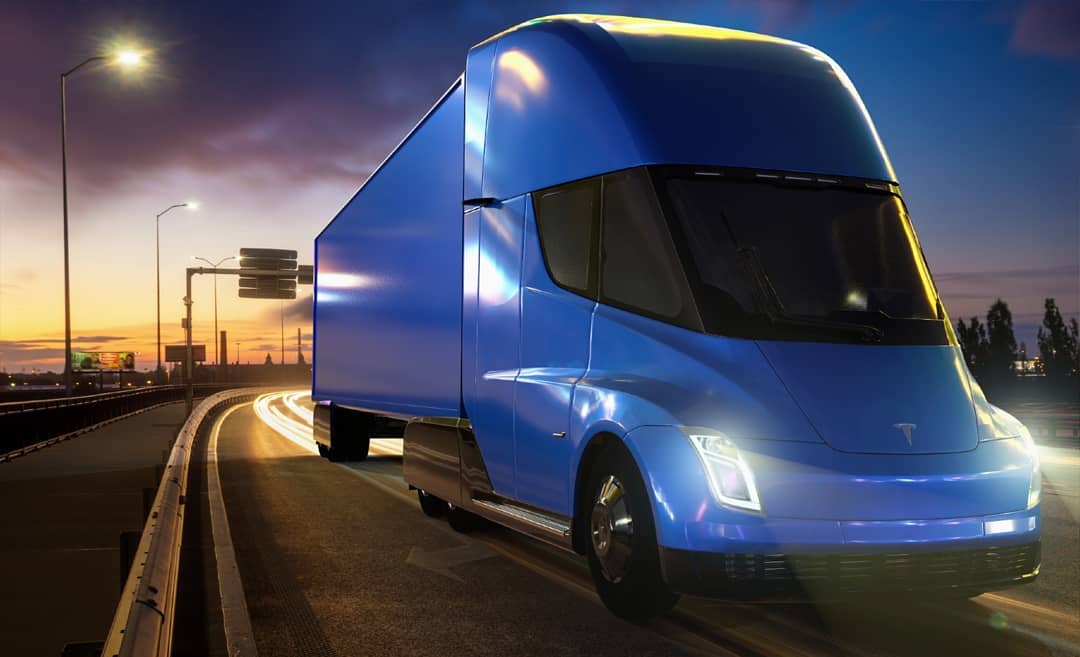
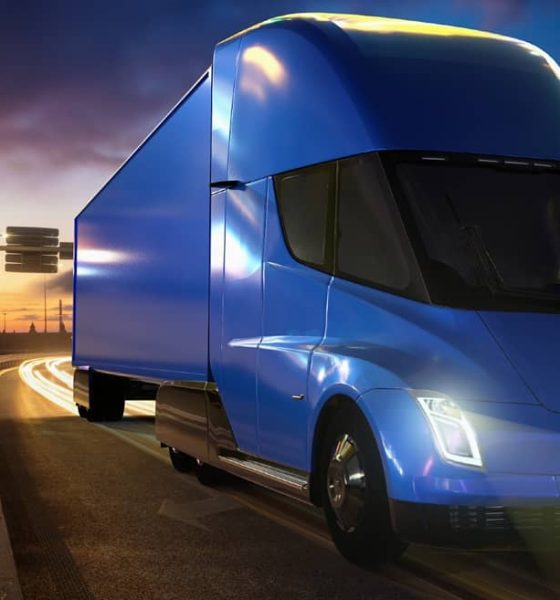
News
Tesla Semi & Convoy Mode are a perfect fit for EU Commission’s updated mobility strategy
The Tesla Semi and its Convoy Mode feature could gain a strong foothold in Europe now that the EU Commission has released its plans to promote sustainable and smart transportation options in the region. The EU Commission released its Sustainable and Smart Mobility strategy last week.
The strategy focused on three key factors, namely sustainability, smart mobility, and resilience. It included goals for the passenger car industry, but also prominently discussed making public transportation and heavy-duty vehicles carbon neutral.
Zero-Emission Lorries and the Tesla Semi
The EU Commission plans to have at least 30 million zero-emission cars and 80,000 carbon neutral lorries, or heavy duty trucks like the Tesla Semi, in operation by 2030. It will propose a revision in CO2 standards for cars and vans in Europe by June 2021 and review carbon standards for heavy-duty vehicles by 2022.
The EU Commission’s plans for zero-emission lorries puts the Tesla Semi in an advantageous position. Besides being carbon neutral, the Tesla Semi also aligns with the EU Parliament’s truck manufacturing law.
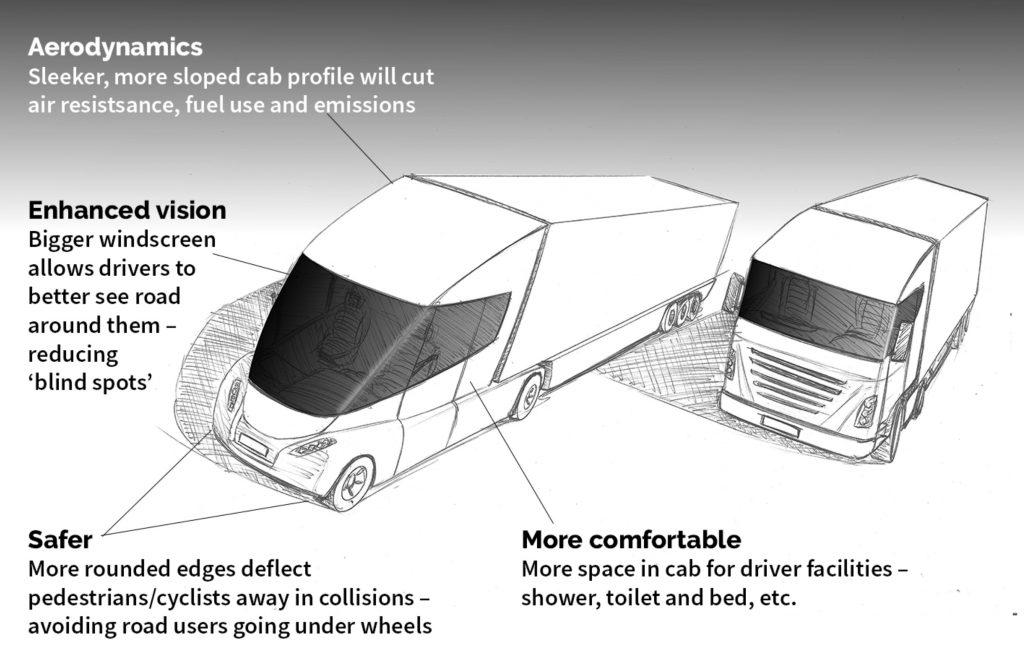
Last year, the EU Parliament voted for a law that required heavy-duty vehicle manufacturers to produce more aerodynamic, energy efficient trucks. Regulations in the law depicted a truck with 80-90 cm cabs and bigger windshields for a better view of the road. The European Federation for Transport and Environment released an illustration of the EU Parliament’s ideal heavy-duty vehicle design and it was very similar to the Tesla Semi.
Between the EU Commission and EU Parliament, it seems the game has been set for Tesla. The scales seems to tip more in favor for Tesla and the Semi when the Commission’s Smart Mobility plan comes into play.
Tesla Semi’s Convoy Mode in Europe
As for Smart Mobility, the EU Commission wants to proactively create favorable conditions for the development of new technologies. The Commission even stated that it would provide “all necessary legislative tools for their [new technologies’] validation.”
Support for autonomous vehicles is specifically mentioned in the EU Commission’s strategy, giving the Tesla Semi yet another advantage in Europe’s heavy-duty vehicle industry. Tesla’s advanced driver-assist software, Full Self-Driving, has been laid with some restrictions in Europe, but that may change in the future.
Tesla’s autonomous software development will definitely make it to the Semi and one feature in particular could be a gamer changer in the industry–Convoy Mode. Back in 2017, when Tesla unveiled the Semi, Elon Musk shared that the company’s Class 8 truck was already capable of Convoy Mode, which would allow multiple Semis to semi-autonomously draft in close proximity with each other. Since then, Tesla’s FSD and Autopilot software have gone through vast improvements, suggesting that Convoy Mode only improved as well.
Trucking veteran Sean Chenault was impressed by the Semi’s feature set and was particularly taken by Convoy Mode. “Having autonomous vehicles, you don’t need to pay a driver, and you don’t need to worry about hours of services,” he said. The trucking industry has been struggling with a shortage of drivers lately due mostly to safety concerns. Features like Convoy Mode have been one possible solution to solving driver shortage.
The Tesla Semi’s place in the EU Future
Chenault said the Semi was “a good thing for the trucking industry as a whole.” And it may be good for the EU Commission’s Sustainable and Smart Mobility strategy, too, specifically when it pertains to lorries.
Tesla’s business as an all-electric car maker would definitely benefit for the EU Commission’s new strategy. Tesla has already been gaining some more ground in Europe over the years with the Tesla Model 3. Next year could be another big year for Tesla in Europe with Giga Berlin and the release of the Model Y in the region. With the Semi in the picture, Tesla could cement itself as a key player in the region’s transportation sector.

Elon Musk
Elon Musk debunks pay package and lip reader claims in double takedown
Musk’s quick debunks highlighted once more that X is an ideal platform for directly countering misinformation.
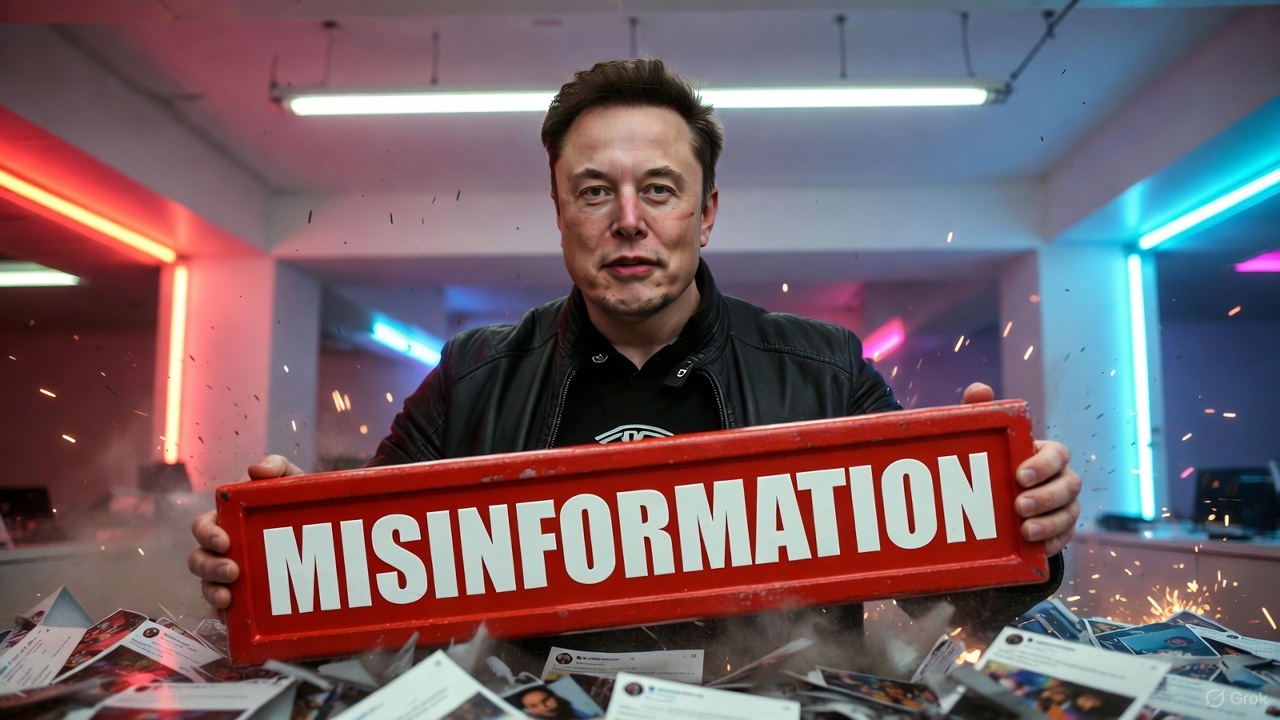
Elon Musk recently took to X to debunk some misinformation about his 2025 CEO performance award, as well as some comments he made during Donald Trump’s banquet in honor of Saudi Prince Mohammed bin Salman.
Musk’s quick debunks highlighted once more that X is an ideal platform for directly countering misinformation.
Musk’s pay package
Elon Musk’s 2025 CEO performance award was created as a path for him to gain a 25% stake in Tesla. It would also make him a trillionaire, provided that he manages to meet all of the performance award’s aggressive targets. This has not stopped critics from running with the apparent narrative that Musk will be getting the $1 trillion with utmost certainty, however.
This included the More Perfect Union account on X, which noted that “Elon Musk is set to make more than every U.S. elementary school teacher combined, according to the Washington Post.”
Musk responded to the pro-union amount’s post, highlighting that he has not earned any of his $2025 performance award so far. Musk also noted that those who believe he will be getting $1 trillion should invest in TSLA stock, as his compensation is tied to the company’s performance and growth. Investors who hold their TSLA until Musk achieves his full pay package would likely get notable returns.
Lip reader fail
Musk also debunked claims from the Daily Mail, which claimed that he made an “explosive” remark at Trump’s banquet for Saudi Prince Mohammed bin Salman. Citing observations from lip reader Nicola Hickling, the Mail claimed that Musk asked Pfizer CEO Albert Bourla, “What is your opinion, is he a terrorist?” The publication also posted a video of Musk allegedly making the risqué comment on X.
Musk proceeded to correct the publication, stating that the lip reader’s observations were fake. Instead of asking the Pfizer CEO if the Saudi Prince was a terrorist, Musk noted that he was asking the executive about cancer medicine. “False, I was asking about upcoming cancer drugs,” Musk wrote in a response on X.
Musk’s comments resulted in numerous critical responses to the Mail’s video, with some X users joking that the lip reader who analyzed the clip should probably get a visual acuity test, or a better training course on lip reading at least.
News
Tesla Diner to transition to full-service restaurant as Chef heads for new venture
“I am leaving the Tesla Diner project to focus on the opening of Mish, my long-desired Jewish deli. Projects like Mish and the Tesla Diner require a sharpness of focus and attention, and my focus and attention is now squarely on Mish.”
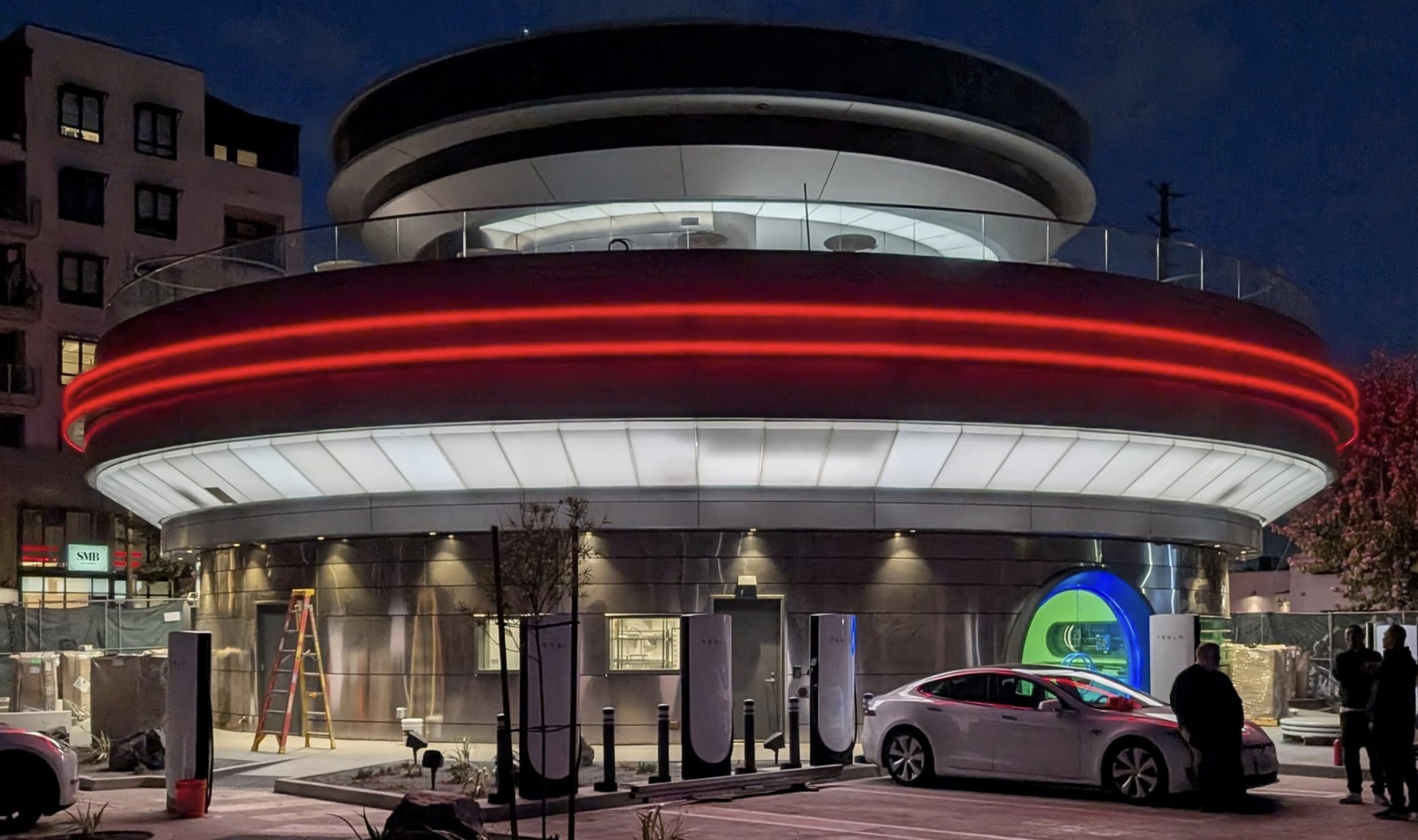
Tesla Diner, the all-in-one Supercharging and dining experience located in Los Angeles, will transition to a full-service restaurant in January, staff said, as Chef Eric Greenspan said he would take on a new project.
A report from the Los Angeles Times says Greenspan confirmed through a text that he would leave the Diner and focus on the opening of his new Jewish deli, Mish.
Greenspan confirmed to the paper:
“I am leaving the Tesla Diner project to focus on the opening of Mish, my long-desired Jewish deli. Projects like Mish and the Tesla Diner require a sharpness of focus and attention, and my focus and attention is now squarely on Mish.”
Greenspan took on the job at the Tesla Diner and curated the menu back in March, focusing on locally-sourced ingredients and items that would play on various company products, like Cybertruck-shaped boxes that hold burgers.
Tesla Cybertruck leftovers are the main course at the Supercharger Diner
The Tesla Diner has operated as somewhat of a self-serve establishment, where Tesla owners can order directly from their vehicles through the center touchscreen. It was not exclusive to Tesla owners. Guests could also enter and order at a counter, and pick up their food, before sitting at a booth or table.
However, the report indicates Tesla is planning to push it toward a sit-down restaurant, full of waiters, waitresses, and servers, all of which will come to a table after you are seated, take your order, and serve your food.
It will be more of a full-featured restaurant experience moving forward, which is an interesting move from the company, but it also sounds as if it could be testing for an expansion.
We know that Tesla is already considering expanding locations, as it will be heading to new areas of the country. CEO Elon Musk has said that Tesla will be considering locations in Palo Alto near the company’s Engineering HQ, and in Austin, where its HQ and Gigafactory Texas are located.
Musk said that the Diner has been very successful in its first few months of operation.
News
Tesla adds new surprising fee to Robotaxi program
“Additional cleaning was required for the vehicle after your trip. A fee has been added to your final cost to cover this service. Please contact us if you have any questions.”
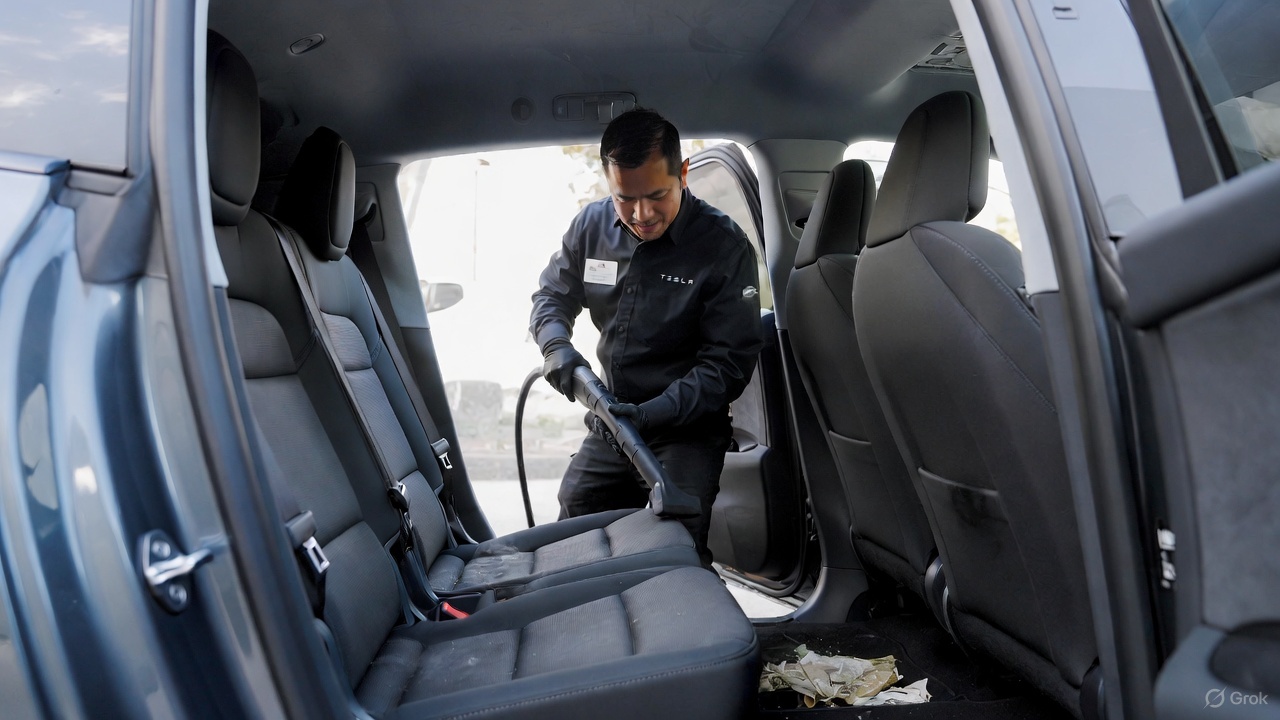
Tesla has added a new and somewhat surprising fee to the Robotaxi program. It’s only surprising because it was never there before.
Tesla shocked everyone when it launched its Robotaxi platform and offered riders the opportunity to tip, only to tell them they do not accept tips. It was one of the company’s attempts at being humorous as it rolled out its driverless platform to people in Austin.
As it has expanded to new cities and been opened to more people, as it was yesterday to iOS users, Tesla has had to tweak some of the minor details of the Robotaxi and ride-hailing platforms it operates.
First Look at Tesla’s Robotaxi App: features, design, and more
With more riders, more vehicles, and more operational jurisdictions, the company has to adjust as things become busier.
Now, it is adjusting the platform by adding “Cleaning Fees” to the Robotaxi platform, but it seems it is only charged if the vehicle requires some additional attention after your ride.
The app will communicate with the rider with the following message (via Not a Tesla App):
“Additional cleaning was required for the vehicle after your trip. A fee has been added to your final cost to cover this service. Please contact us if you have any questions.”
The cost of the cleaning will likely depend on how severe the mess is. If you spill a soda, it will likely cost less than if you lose your lunch in the back of the car because you had a few too many drinks.
This is an expected change, and it seems to be one that is needed, especially considering Tesla is operating a small-scale ride-hailing service at the current time. As it expands to more states and cities and eventually is available everywhere, there will be more situations that will arise.
The messes in vehicles are not a new situation, especially in a rideshare setting. It will be interesting to see if Tesla will enable other fees, like ones for riders who request a ride and do not show up for it.








